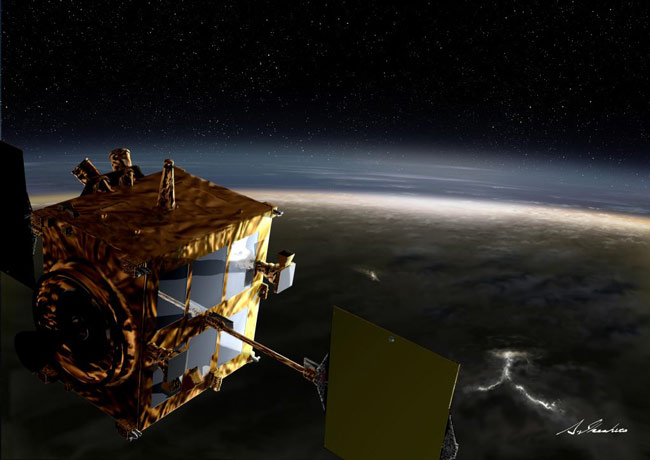After Missing Venus, Japanese Spacecraft Tries for 2nd Chance

A Japanese Venus probe fired its main engine Wednesday (Sept. 7) for the first time since overshooting the planet in December, paving the way for a possible comeback bid in 2015.
The Akatsuki spacecraft was slated to enter orbit around Venus on Dec. 6. But its engine failed during a crucial orbit-insertion burn, and the probe went sailing off into space.
But officials with the Japanese Aerospace Exploration Agency (JAXA) haven't given up on Akatsuki. They want the probe to take another shot at Venus during the next available opportunity, which could come as soon as 2015. So they've started testing the probe's main engine, called the "orbit maneuver engine."
"We have confirmed that the OME jetted out thrust at 11:50 a.m. on September 7 (Japan Standard Time)," JAXA officials wrote in an update. [Photos of Venus, the Planet Next Door]
Wednesday's burn lasted two seconds, just as planned, JAXA officials said. Another test, this one lasting 20 seconds, is slated for next Wednesday (Sept. 14), they added.
If all goes well with that one, Akatsuki will likely perform a real operational burn in November, the news agency AFP reported. That maneuver would help put the spacecraft on the right path to make its second attempt at Venus.
The $300 million Akatsuki spacecraft (whose name means "Dawn" in Japanese) launched in May 2010 along with JAXA's Ikaros solar sail, which successfully deployed in deep space. Akatsuki was supposed to spend two years zipping around Venus, studying the hellishly hot planet's clouds, atmosphere and weather.
Breaking space news, the latest updates on rocket launches, skywatching events and more!
One main goal was to determine how Venus — similar in so many ways to Earth — veered off on such an extreme path, becoming an inhospitable world with thick sulfuric-acid clouds and surface temperatures hot enough to melt lead, JAXA officials have said.
Akatsuki was the second robotic Japanese probe ever dispatched to visit another planet. Japan's first planetary mission, the Nozomi orbiter sent to Mars, also failed to enter orbit in late 2003.
You can follow SPACE.com senior writer Mike Wall on Twitter: @michaeldwall. Follow SPACE.com for the latest in space science and exploration news on Twitter @Spacedotcom and on Facebook.

Michael Wall is a Senior Space Writer with Space.com and joined the team in 2010. He primarily covers exoplanets, spaceflight and military space, but has been known to dabble in the space art beat. His book about the search for alien life, "Out There," was published on Nov. 13, 2018. Before becoming a science writer, Michael worked as a herpetologist and wildlife biologist. He has a Ph.D. in evolutionary biology from the University of Sydney, Australia, a bachelor's degree from the University of Arizona, and a graduate certificate in science writing from the University of California, Santa Cruz. To find out what his latest project is, you can follow Michael on Twitter.
